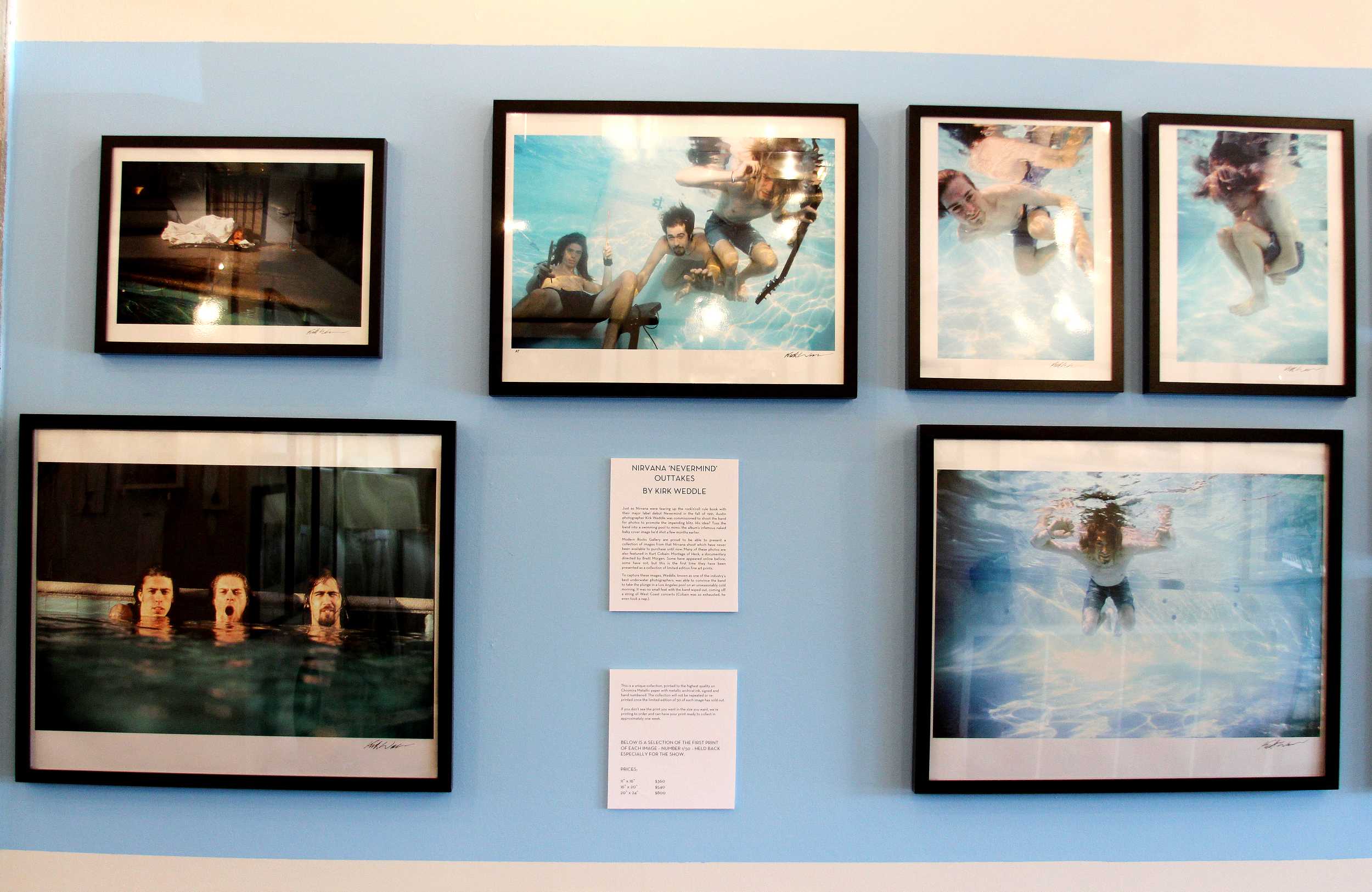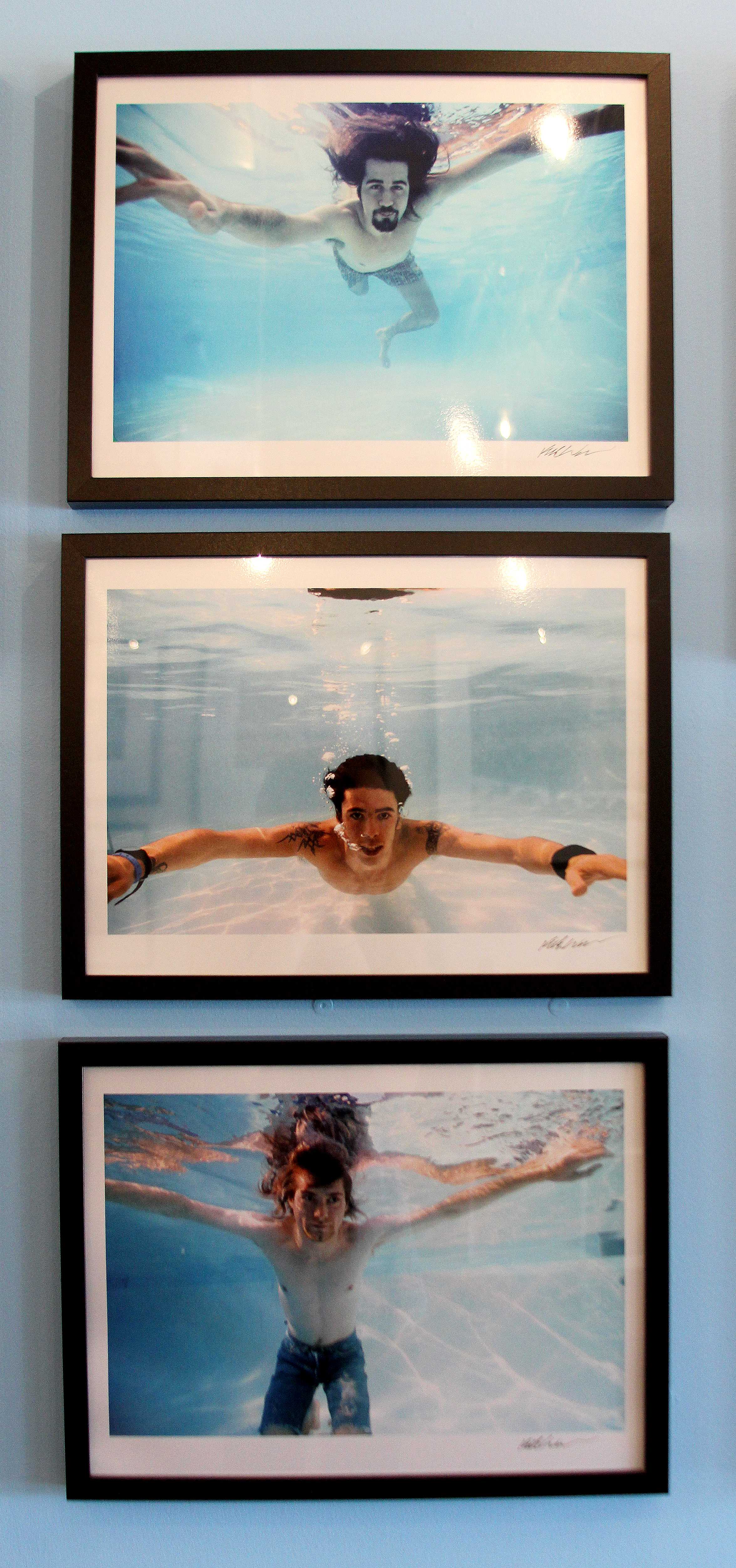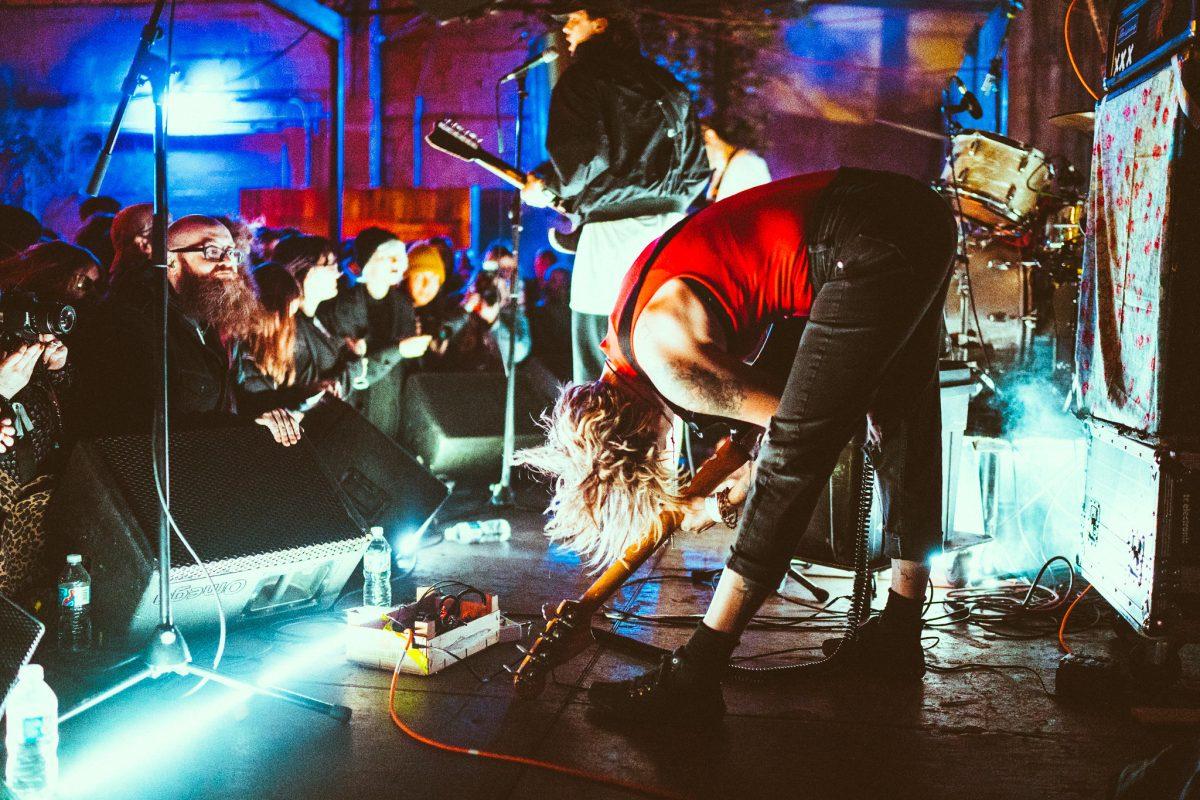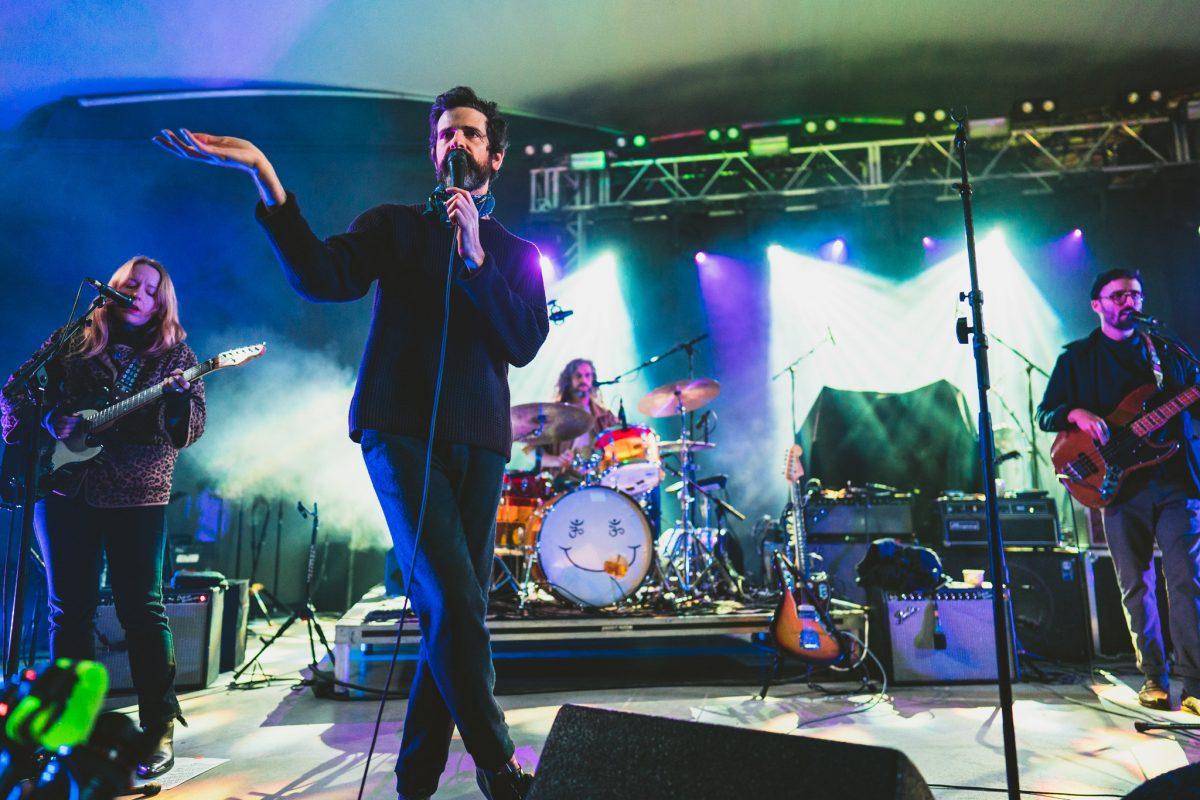By Tess Cagle
Nearly 25 years after the release of Nirvana’s iconic “Nevermind” album, and 21 years after Kurt Cobain’s suicide, the world is still captivated by the group known as the flagship band of Generation X. That captivation is stronger than ever this year with the release of “Kurt Cobain: Montage of Heck,” Brett Morgen’s documentary on Cobain. Closer to home, Modern Rocks Gallery in Austin recently opened an exhibit that showcases outtakes from a Nirvana photo shoot, taken right as the band was plunging into stardom.
The “Nirvana Nevermind” exhibit opened on May 30 and contains the highlights of 200 photos Kirk Weddle took of the band on October 28, 1991. Weddle, who also shot the iconic cover for the “Nevermind” album, says he found the film in his closet and realized a lot of it was salvageable.
Steve Walker, owner of the Modern Rocks Gallery, says these photos are important pieces of rock history. “They’re pictures taken of the band just as this album was kicking down the door of the music scene,” he says. The shoot was done while the band was on tour, and Weddle says the band was not thrilled to be getting thrown into a cold swimming pool on their day off. “It was a tough shoot,” he explains. “The band was tired and they had been on tour, played a show the night before and had to do some publicity shoot early in the morning. They wanted three people in the frame and that’s never easy, and then you add the water element to it.”
Still, Weddle was able to complete the shoot, photographing the band on the cusp of global stardom. This is what Walker says is the best part about the photographs. “I love the juxtaposition that it wasn’t a big sound stage, it was a small little Motel 6 swimming pool. Yet these are really important pictures,” Walker says. He says these photographs show a soon-to-be legendary band, still in the process of blowing up. “I was a musician for many years, and there’s so many things people don’t see,” he says. “You see the polished thing at the end — the product, if you like. But with any product you make, there is a massive process, and this is showing a part of the process.”
There is no question that Nirvana’s influence lives on, but there’s room to wonder why. Are they influential because their music was so good, or is it really just because Cobain became the icon for a misunderstood generation after he killed himself? In his suicide letter, Cobain wrote, “I don’t have the passion anymore, and so remember, it’s better to burn out than to fade away.” Rock critics still question: Why is it that dying is the best career move a rockstar can make?
Walker says that Cobain, by taking his own life, has become a “spokesman for the fucked up generation.” He also says that the biggest impact of Cobain’s suicide may have been that it forced Nirvana to end with a bang, which seems to be what Cobain was hoping for, based on his suicide letter. “There was no dodgy fifth album, there was no reggae album, they didn’t ever get the banjos out,” Walker says. “Because it stopped abruptly, it didn’t fizzle out or become anything else.” Mike Wells, a fan of the band who followed them from the very beginning and attended Weddle’s exhibit, essentially agrees with Walker. “I think the question is, would Nirvana still be as popular as they are? We don’t know because we don’t know an alternative timeline,” he adds.
Angelica Flores, a psychiatric nurse from Corpus Christi, drove to Austin specifically for the exhibit opening and purchased one of Weddle’s $360 photographs. She says her interest in Nirvana initially stemmed from seeing “Montage of Heck” earlier this year and was amplified when one of her coworkers took his own life only a few days later. While Cobain’s suicide sparked her interest in the band, she says she doesn’t agree that Cobain’s suicide is his legacy. “He was troubled and he was talented — there wasn’t really any interrelation,” Flores says. “Talent didn’t discriminate because he was depressed.”
Instead, Flores and many other fans argue that Cobain’s, and Nirvana’s, real legacy was the impact that it left on the music industry. “He changed music; his sound was groundbreaking,” Weddle says. As a fan who was there from the beginning, Wells describes Nirvana as “the Beatles of his generation.” He recalls hearing “Smells Like Teen Spirit” come on the radio when he was 28 years-old and says it was like “a bolt of lightning had hit him in the head” and that he had never felt so electrified by music before. “So, it matters to me, and I think when you look at the whole course of music history, what Nirvana did in terms of changing music and that post-punk grunge genre, you see it’s affect,” Wells says. “You have Pearl Jam, you have Green Day, you have all these bands that followed behind them. Even today, when you look at Austin City Limits you have the Foo Fighters. Those are all outgrowths of that kind of punk that talks to you and tells a story.”
For Walker, the relationships built on Nirvana’s legacy and the “Nirvana Nevermind” photographs make his job worthwhile. He witnessed a father, who had listened to Nirvana growing up, bringing his daughter, who was also a big fan, to the exhibit opening. “It was kind of a really lovely connection, almost like a family chain,” he says. “It was a really beautiful moment for me, and it was then that I realized why I was so happy doing what I do.”
Walker says these photographs are important because of the connection fans feel they have with them. “If you go into a regular gallery, and you’re looking to buy some artwork, you have to really connect with it. You have to fall in love with it for some reason,” he says. “But here, the connection is already made because you listened to Nirvana as a teenager. When you come in here, the connection is rekindled.”
The “Nevermind” exhibit runs through June 27 at Modern Rocks Gallery, located at 916 Springdale Rd. and open Tuesday through Saturday, 11 a.m. to 6 p.m.













































